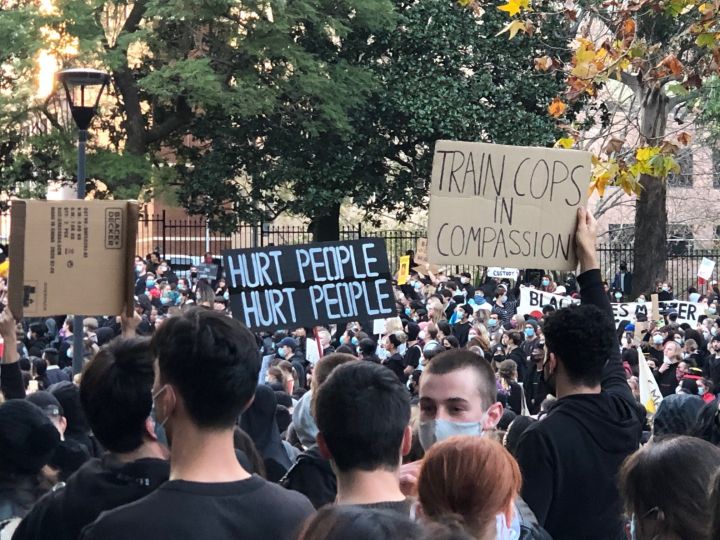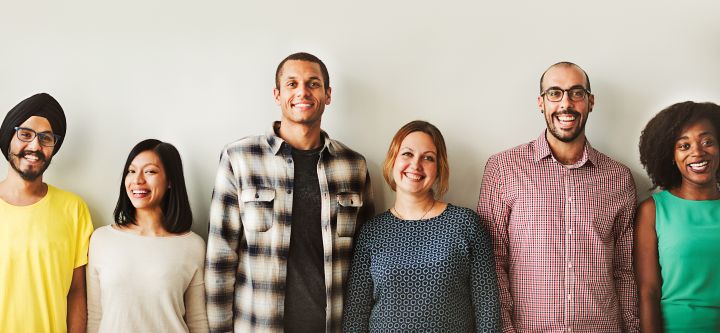The following article is a summary of the discussion that took place in Inclusive Australia’s first Emerging Issues Forum on 12 August 2020.
You can view the full session at Black Lives Matter
Black Lives Matter in Australia
The reinvigoration of the Black Lives Matter (BLM) movement in the US has permeated the globe, highlighting racism and sparking protests against racially motivated violence at the hands of law enforcement.
In Australia, the movement has been successful in raising awareness about the 439 Aboriginal and Torres Strait Islander people (and counting) who have died in custody with no convictions over their deaths since the end of the Royal Commission into the issue in 1991. It has also brought attention to the facts that the age of criminal responsibility is 10 years old, Aboriginal children are 17 times more likely to end up in custody and Aboriginal people are 10 times more likely to die in prison.
“Australians are starting to realise that we are talking about young children who are highly vulnerable and traumatized,” Victorian Aboriginal Legal Service Director of Legal Services Moricia Vrymoet said.
“This is a unique opportunity to change direction and create a more just and equitable country and it certainly should not be squandered.”
Despite the momentum behind the movement that has seen people join rallies, Blackout Tuesdays and the Raise The Age campaign as well increase donations to Aboriginal services and organisations, there is concern that interest will soon wane.
Koorie Youth Council Executive Director Indi Clarke said public sentiment was good but needed to lead to action.
“It’s great you might care while it’s trending, but every single day black lives matter. For a non-indigenous person, how are you being an ally for change every day of your life? What does it really mean to stand with black people.”
Consultant Karen Milward and Chair of the Kinaway Victorian Aboriginal Chamber of Commerce and Community First Development said not much had been achieved despite the attention. She said we should be hearing more from the police and there needed to be real consequences for people dying.
The broader context
Part of the BLM movement’s success has been its ability to focus on a single incarnation of racism, being the mistreatment of black people by law enforcement and the criminal justice system, particularly that resulting in death. While it remains a priority, it also gives rise to the question of how we reduce the amount of contact with the justice system in the first place.
“The criminal justice system in one sense is the end of food chain,” Inclusive Australia Board member and Chair of the First Nations Foundation and the Koorie Heritage Trust Ian Hamm said.
“We need to also address issues such as early childhood years, education and economic opportunity. Government policy needs to be shaped around creating an alternative life course.”
Contributing to the problem is the strained relationship between the people and the police. Ian called for a return to community policing from control policing, which was causing fear and distrust among a range of communities and creating a power imbalance between law enforcement and the people they were meant to be protecting.
Amidst BLM activity in July, new Closing the Gap targets were released a decade after the last ones, setting the goal to reduce Aboriginal and Torres Strait Islander adults held in incarceration by at least 15 per cent by 2031.
While the involvement of the Indigenous representative body, The Coalition of the Peaks, in setting the targets was universally welcomed, questions were raised about whether the targets were aspirational enough, who would be accountable for them and whether there was enough funding to see them through.
Regarding the target to close the gap on life expectancy within a generation, Moricia said, “It sets a projection of parity with non-Aboriginal people by 2093 – that’s 73 years to equality and that’s not a genuine commitment to Aboriginal lives.”
Ian said to improve the life course for Aboriginal and Torres Strait Islander people, the focus had to change. “Where we measure good things in terms of bad things not getting worse is a terrible indictment on policy thinkers.”
What you can do
With Aboriginal and Torres Strait Islander people making up only 3 per cent of the Australian population, the community relies on allies to stand with it.
For Indi, this starts within. “We need to address our own internal unconscious bias. We all grew up with it because we grew up in the way of western education, which is status, money, power, currency. That’s what is at the root of power here, but that is actually an alien concept for many Aboriginal and Torres Strait Islander people. Community first, people first, that’s the way of our people and always has been. So, when you are coming to the table, how are you starting to look through that lens?”
In order to become an ally with a strong voice and join the movement, you first have to understand the issues, according to Karen. This requires people educating themselves about Aboriginal Australia including the culture, the knowledge and the entire history.
“If you are a mature nation, you don’t get to pick and choose the parts of your history you like. You have to own it all – the good, the bad and the really ugly,” Ian said.
For the corporate sector to make a difference, there needs to be a shift from tokenistic and welfare-based action to genuine connection and mutual benefit.
Karen called for organisations to set both employment and procurement targets, pointing out that Aboriginal and Torres Strait Islander people can do jobs just as well as their non-Aboriginal counterparts.
Ian reiterated the value of Aboriginal and Torres Strait Islander people at all levels of the company as well the many Aboriginal businesses providing unique products and services that could enhance the private sector.
“Aboriginal people have a track record of working in highly complex environments,” he said.
“We know the social contract between business and society has been broken and needs to be restored. Aboriginal people have a unique understanding of the nexus of society and how the economy should support that.
With these measures and those in the table below, the group believed change could be achieved and lives could be saved.
“This is an evolution not a revolution. It’s going to be a journey where there are good days and bad days, so hang in there because ultimately it will be worth it for all of us.”Further Links
Victorian Aboriginal Legal Service
VALS Specialist Legal Litigation Practice


Let us know!

